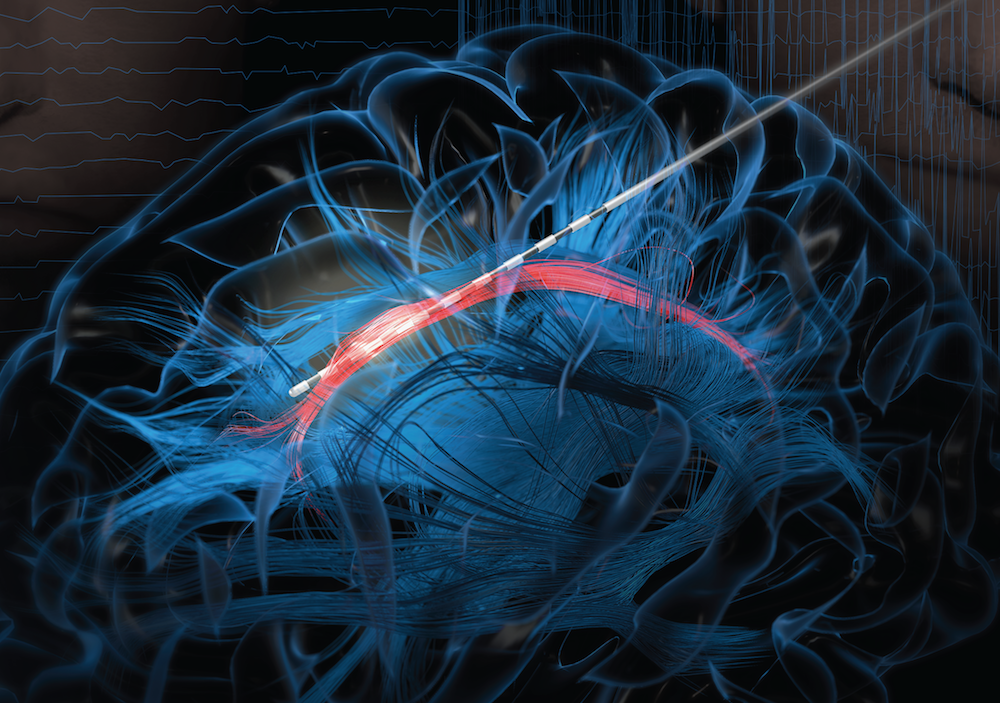Doctors Zapped a Woman's Brain So She Could Laugh Through 'Awake' Brain Surgery

When the woman woke up from her sedation, she felt anxious and started crying.
That’s not atypical, given the circumstances: The woman, an patient with epilepsy, was undergoing awake open-brain surgery at the Emory University School of Medicine. Her head was locked in place, and her brain was exposed. But she needed to stay awake for her own safety — so that doctors could talk to her during the operation and therefore ensure they didn't interfere with other areas of the brain involved in skills such as language.
Typically, doctors use a combination of sedation and distraction to keep patients calm during awake open-brain surgery; however, this approach doesn't always work. When it doesn't, patients can be in danger of panicking and moving their heads or even reaching their hands up toward their exposed brain. [Inside the Brain: A Photo Journey Through Time]
So this time, doctors tried a new approach: They made the woman laugh. And, according a recent report of her case, published online on Dec. 27, 2018, in The Journal of Clinical Investigation, it worked.
Laughing through surgery
Of course, making a person laugh during awake open-brain surgery isn't as simple as telling a really good joke. Instead, the doctors went straight to the source: the brain, according to the report. To induce laughter, they stimulated a specific area in a long bundle of brain cell tails that run from the front of the brain to the back. The subsequent laughter helped calm the woman for the duration of the surgery.
"Immediately she had profound relief, she was happy, able to communicate and able to make jokes" said senior case report author Dr. Jon Willie, a neurosurgeon at Emory University School of Medicine. Willie was one of the surgeons who operated on the woman.
In fact, when the doctors tried this type of stimulation on two other patients with epilepsy (who had electrodes implanted in the brains for monitoring of their seizures but weren’t undergoing awake open-brain surgery), they found consistent results — stimulating this area of the brain caused a sense of well-being and relieved anxiety, Willie told Live Science.
Sign up for the Live Science daily newsletter now
Get the world’s most fascinating discoveries delivered straight to your inbox.
The doctors targeted a part of the brain called the cingulum bundle. The bundle is made up of white matter — the parts of the brain made up of the tails of brain cells, or axons, that signals travel across. The cingulum bundle connects to many parts of the brain that coordinate emotions.
Willie said that in previous studies in which doctors attempted to stimulate certain parts of the brain, the doctors typically targeted gray matter, which is the area of the brain that contains the brain cells' bodies. But some of these past studies didn't claim results that were as strong and consistent as theirs, when they stimulated the white matter, he said.
Think of the white matter as the trunk of a tree and the grey matter as the branches and leaves, Willie said. By stimulating a larger part of the structure, doctors have better access to greater functions of the brain, he said.
Fausto Caruana, a neuroscientist at the University of Parma in Italy, who was not part of this new study, conducted similar tests a few years ago and found that stimulating the gray-matter regions right next to this bundle also successfully elicited laughter and the emotions that come with it.
Scientists had long thought that this area of the brain was involved in only the control of the muscles that pull the sides of the mouth upward during laughter, and that it had nothing to do with the emotions.
"A few years ago, nobody was ready to believe" that the cingulum bundle and grey matter around it also played a role in emotions, Caruana told Live Science.
But the new study "seems to support and even capitalize on this idea" that stimulating this area of the brain elicits both laughter and the emotions that come with it, he said.
However, Caruana noted that he doesn't necessarily agree with the takeaway that stimulating white matter is better than stimulating grey matter. White matter, like a bundle of wires running across the ground, is "messy" and makes it "far more difficult to understand the origin of the signal," he said. Which wire plugs into which device?
Indeed, because this bundle of wires runs through so many different areas of the brain, Willie and his team also wanted to see if stimulating the specific spot they were looking at caused any side effects. They didn't find evidence that such stimulation harmed the mental status of the patients, Willie said. But in one of their patients, they found one "side effect": a delay in recall on a list-learning task. However, the effect went away once the stimulation ended.
"I'm hopeful that someday we'll have a less-invasive type of stimulation," Willie said. Indeed, such stimulation could one day even help with anxiety and depression, he added.
Originally published on Live Science.

Yasemin is a staff writer at Live Science, covering health, neuroscience and biology. Her work has appeared in Scientific American, Science and the San Jose Mercury News. She has a bachelor's degree in biomedical engineering from the University of Connecticut and a graduate certificate in science communication from the University of California, Santa Cruz.









